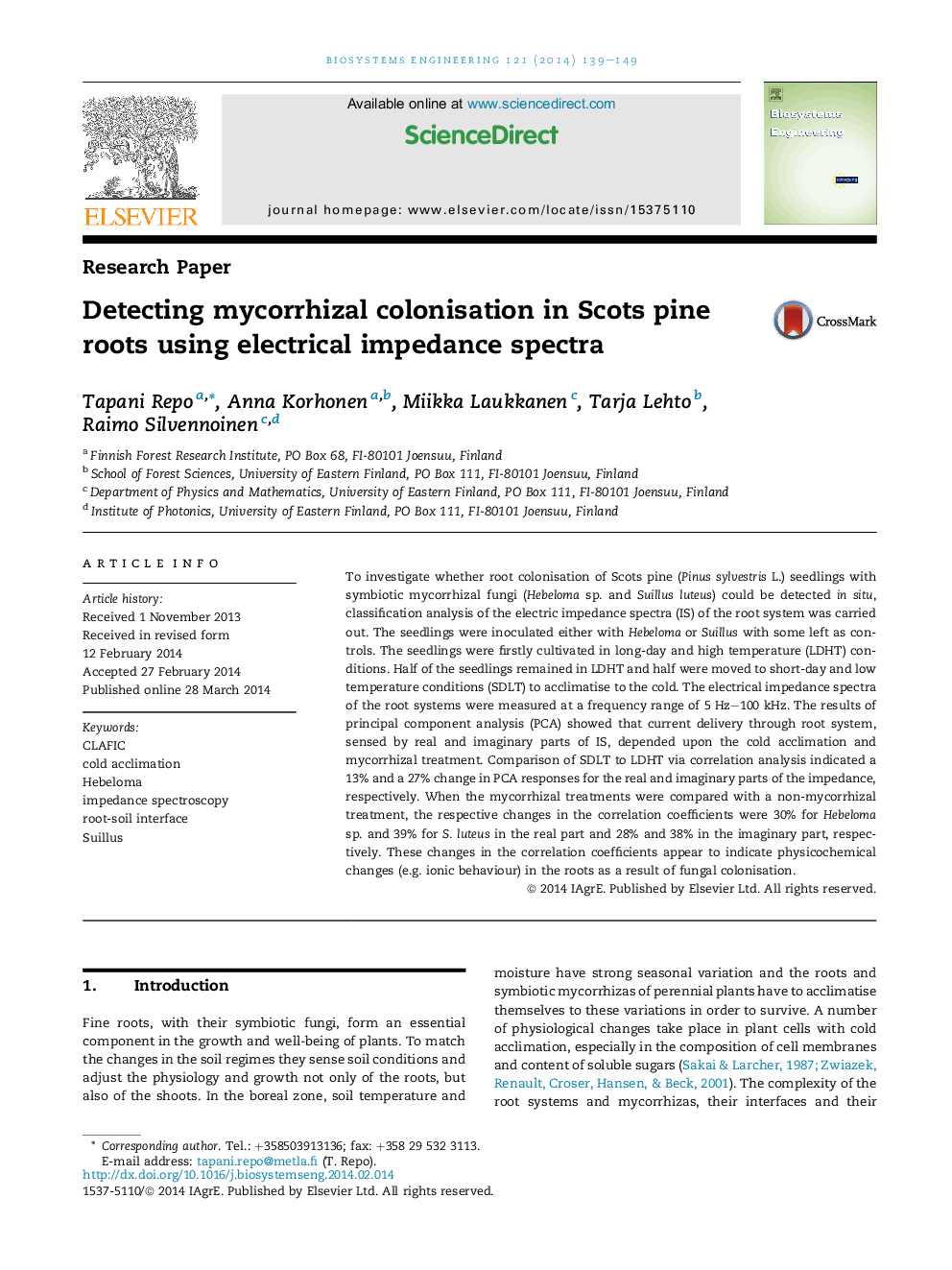| Article ID | Journal | Published Year | Pages | File Type |
|---|---|---|---|---|
| 8055224 | Biosystems Engineering | 2014 | 11 Pages |
Abstract
To investigate whether root colonisation of Scots pine (Pinus sylvestris L.) seedlings with symbiotic mycorrhizal fungi (Hebeloma sp. and Suillus luteus) could be detected in situ, classification analysis of the electric impedance spectra (IS) of the root system was carried out. The seedlings were inoculated either with Hebeloma or Suillus with some left as controls. The seedlings were firstly cultivated in long-day and high temperature (LDHT) conditions. Half of the seedlings remained in LDHT and half were moved to short-day and low temperature conditions (SDLT) to acclimatise to the cold. The electrical impedance spectra of the root systems were measured at a frequency range of 5Â Hz-100Â kHz. The results of principal component analysis (PCA) showed that current delivery through root system, sensed by real and imaginary parts of IS, depended upon the cold acclimation and mycorrhizal treatment. Comparison of SDLT to LDHT via correlation analysis indicated a 13% and a 27% change in PCA responses for the real and imaginary parts of the impedance, respectively. When the mycorrhizal treatments were compared with a non-mycorrhizal treatment, the respective changes in the correlation coefficients were 30% for Hebeloma sp. and 39% for S. luteus in the real part and 28% and 38% in the imaginary part, respectively. These changes in the correlation coefficients appear to indicate physicochemical changes (e.g. ionic behaviour) in the roots as a result of fungal colonisation.
Related Topics
Physical Sciences and Engineering
Engineering
Control and Systems Engineering
Authors
Tapani Repo, Anna Korhonen, Miikka Laukkanen, Tarja Lehto, Raimo Silvennoinen,
